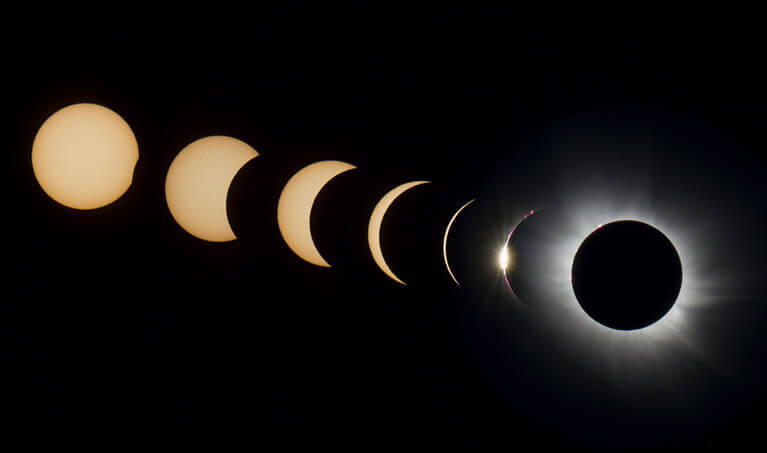How to View a Solar Eclipse Safely
Estimated reading time: 3 minutes, 11 seconds
Solar eclipses are mesmerizing celestial events that have captured the imagination of people for centuries. However, gazing at a solar eclipse without proper eye protection can be harmful. The various methods and tools that allow you to view a solar eclipse safely. We will also provide you with essential tips and guidelines to ensure you enjoy this awe-inspiring phenomenon without risking your eyesight.
What Is a Solar Eclipse?
A solar eclipse occurs when the moon passes between the sun and Earth, casting a shadow on our planet. The moon’s shadow can partially or completely obscure the sun, resulting in a breathtaking display. There are different types of solar eclipses, including partial, total, and annular, each with its unique characteristics.
Understanding the Different Phases
To view a solar eclipse safely, it’s essential to understand its different phases. These include the partial eclipse, total eclipse, and annular eclipse. Each phase offers a distinct viewing experience, and we’ll guide you through what to expect during each of them.
The Importance of Eye Safety
Before you venture out to observe a solar eclipse, it’s crucial to understand the potential dangers to your eyes. Staring at the sun without adequate protection can lead to permanent eye damage. We’ll delve into the science behind this and explain why eye safety should be your top priority.
Tools for Safe Solar Eclipse Viewing
This section will introduce you to the various tools available for safely viewing a solar eclipse. We’ll discuss eclipse glasses, pinhole projectors, telescopes with solar filters, solar viewers, and even using your smartphone for eclipse photography.
Using Eclipse Glasses
Eclipse glasses are specialized eyewear designed to protect your eyes during solar eclipses. We’ll provide detailed information on how to choose the right pair and use them effectively to witness this celestial event safely.
How to Make a DIY Pinhole Projector
For the crafty individuals, we’ll walk you through creating a simple pinhole projector that allows you to watch the eclipse without looking directly at the sun. It’s a fun and educational DIY project that can be enjoyed with family and friends.
Telescopes and Solar Filters
Astronomy enthusiasts often use telescopes to get a closer look at solar eclipses. We’ll discuss the importance of solar filters and how to use them when observing the sun through a telescope.
Observing with a Solar Viewer
Solar viewers are another excellent option for safely viewing the sun during an eclipse. We’ll explain how these devices work and provide recommendations for choosing the right one.
Viewing a Solar Eclipse with a Smartphone
In today’s digital age, many of us like to capture memorable moments with our smartphones. We’ll explore how to use your smartphone to take stunning photos of the solar eclipse while protecting your device and eyes.
Best Places to Watch a Solar Eclipse
Location plays a significant role in your eclipse-viewing experience. We’ll share some of the best places around the world to witness solar eclipses and offer tips on planning your eclipse-chasing adventure.
Preparing for the Big Day
With the eclipse day approaching, it’s essential to be prepared. We’ll provide a checklist of items to bring, including your chosen viewing tools, sunscreen, and comfortable seating.
Capturing the Moment
Photographing a solar eclipse can be challenging, but the results are worth it. We’ll offer expert tips on how to take stunning eclipse photos, ensuring you preserve this unique moment forever.
Dos and Don’ts of Solar Eclipse Viewing
To wrap up our guide, we’ll outline the essential dos and don’ts of solar eclipse viewing. Following these guidelines will help you stay safe and fully enjoy the eclipse experience.
Conclusion
In conclusion, solar eclipses are magnificent natural events that should be enjoyed safely. By following the guidelines and tips provided in this article, you can experience the wonder of a solar eclipse without putting your eyes at risk.
